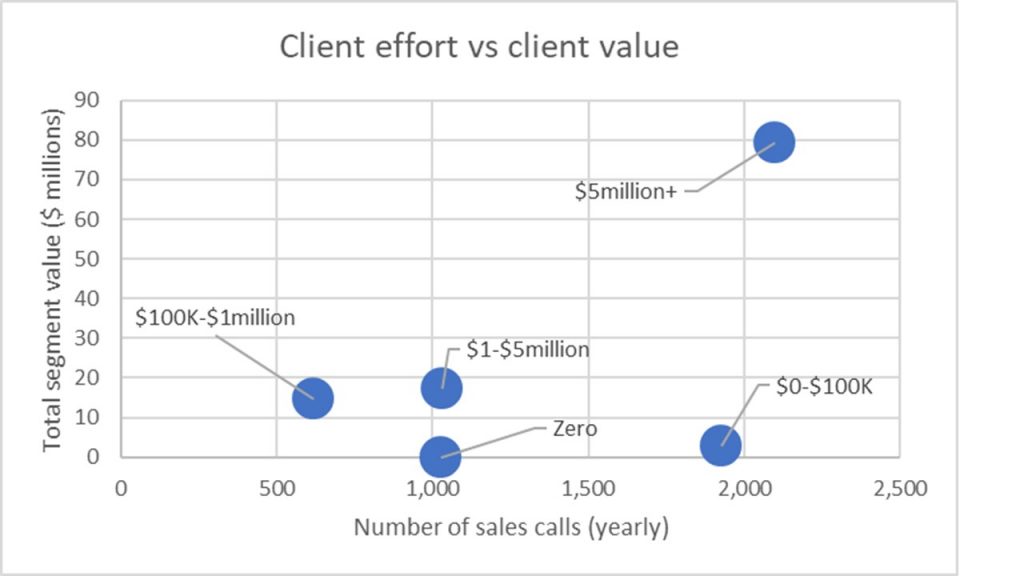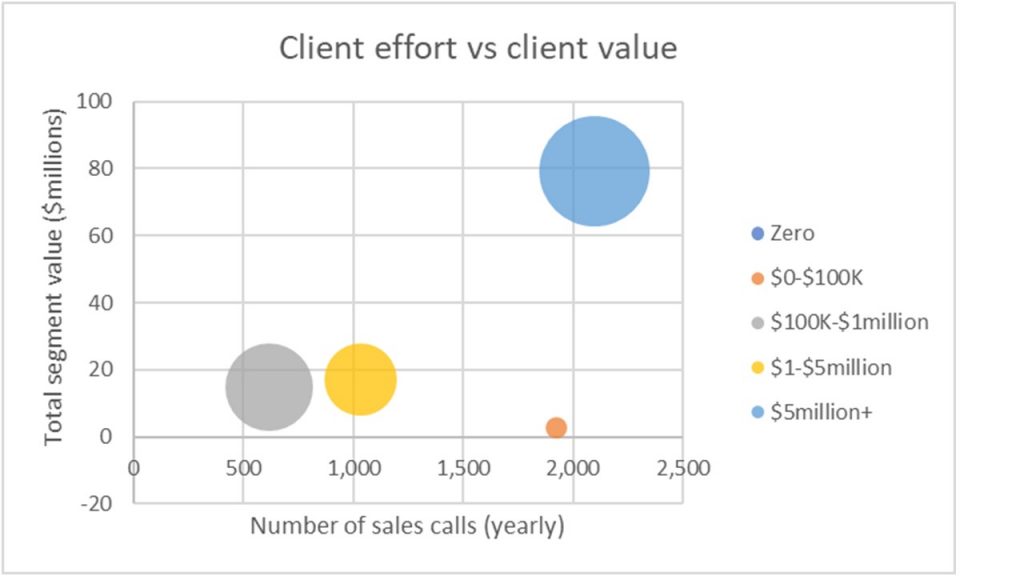All clients are equal but … some should be more equal than others
The sales opportunity
Your sales force is seldom without energy. The Monday morning meeting always has lots of news about who is seeing what clients and how opportunities are progressing. But can you be sure that your sales force is focusing the right effort on the right clients?
There is a simple process to make sure you are getting this right:
- Review client value and compare this to the effort
- Align effort and value
- Action the changes in a simple direct way that you can measure and manage
Reviewing client value and sales effort
It is simple to review how well your sales force is focused. You know clients have different revenue potential. So simply collect the highest value clients into one segment, the lowest into another and divide the remainder into groups that are relevant to you. Then add up the amount of money that – perhaps for last year, perhaps for the last three – each of these groups earned you. This will give you a starting point for client value.
Then count how often you visited each client and sum this for the same segments. This will give you a first look at how much you are investing in your different clients.
It is then a simple matter to plot value against effort to show how you are matching sales effort to sales potential. Of course, this is only a starting point. Estimates of revenue and effort can be made much more accurate by including executive meetings, support visits and phone calls to the former and growth and market potential into the latter. But as a starting point, this is not a bad place.
You would expect to see that your sales team allocates effort reasonably and that the more valuable the client the more time and effort is spent helping them. So what does this look like with a worked example?
Industry example
This client has multiple offices throughout the world and an annual revenue of about $110million. The annual revenue segments are selected as clients that have:
- Above $5million
- $1M to $5million
- $100K to $1M
- Less than $100K
When the revenue for these accounts was matched with sales visits an additional segment had to be added – accounts that generated zero revenue – producing this graph.
There is a lot that you can tell from this graph. The first standout is that the largest and most valuable accounts have the most visits invested in them – and this is good. But the least valuable accounts ($0-100K) is a close second while there is a huge effort put into accounts that generate zero revenue.
When the revenue per sales call is calculated and plotted as size of ‘blob’, the situation is less positive. Huge revenue per call is being generated from the most valuable accounts. This means that not enough effort is being invested into the larger accounts and more upside revenue is possible from this segment. In contrast, the amount of revenue from smaller accounts is … well much smaller … indicating that better results should be achieved with less effort from this segment.
Clearly, this company could get more value from its sales force by re-thinking how it allocates sales time to clients. The question is what it the best allocation and what it the best way of ensuring that the sales force follows this new way of working?


